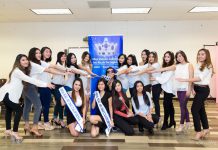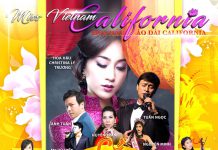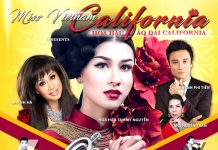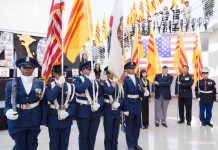On Tuesday, April 30th, 2013, the Vietnamese American Roundtable (VAR) hosted the 38th Black April Commemoration at San Jose City Hall in the Rotunda.
To remember the fall of Saigon, Black April serves to commemorate a significant event in Vietnam’s history. The 38th Black April Commemoration, as the name implies, is to reflect upon the aftermath of the Vietnam War that changed hundred of thousands of lives. Through photo and video exhibits, artwork, live speakers and more, this event seeks to educate young Vietnamese Americans of their country’s history.
This event was made possible with the support of various community members, small businesses and public office holders such as Council Member Kansen Chu and Council Member Ash Kara.
Event: Black April
Date: Tuesday, April 30th, 2013
Time: 5:30pm – 8:30pm
Location: San Jose City Hall in the Rotunda
Admission: free (open to the public)
Attire: Black
Contact & Info: Vietnamese American Roundtable

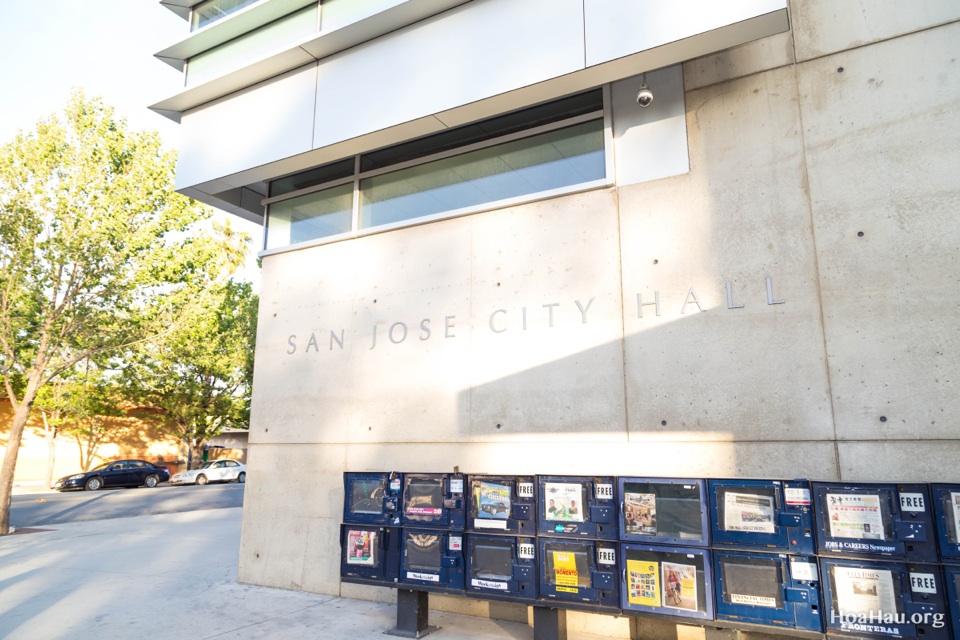 San Jose City Hall
San Jose City Hall

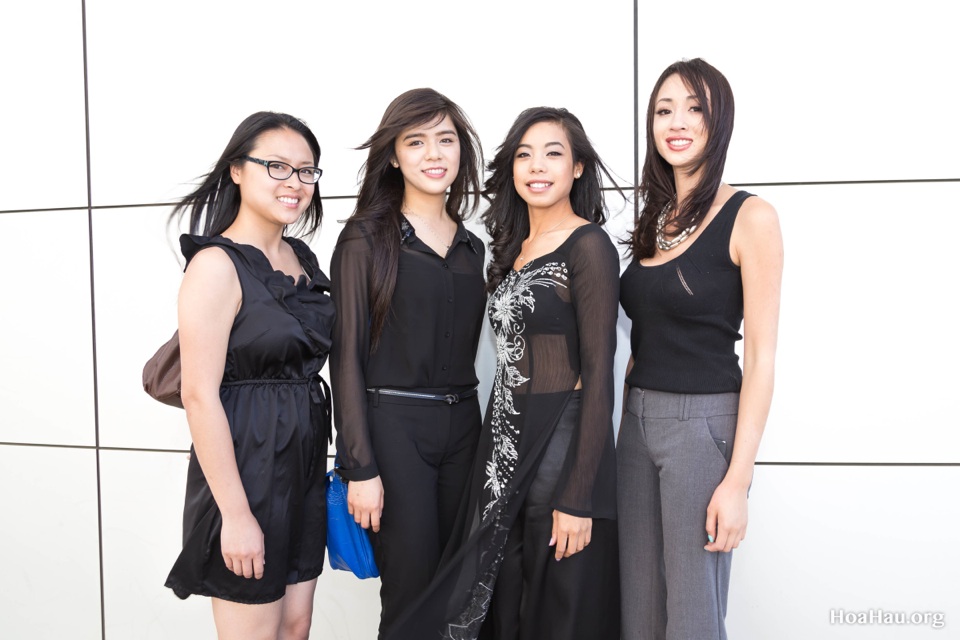 The ladies from the Hoa-Hau Ao-Dai Bac Cali (Miss Vietnam of Northern California 2013) were there to support the event. From left to right: Le, Minh, Yvonne and Anh Thu
The ladies from the Hoa-Hau Ao-Dai Bac Cali (Miss Vietnam of Northern California 2013) were there to support the event. From left to right: Le, Minh, Yvonne and Anh Thu

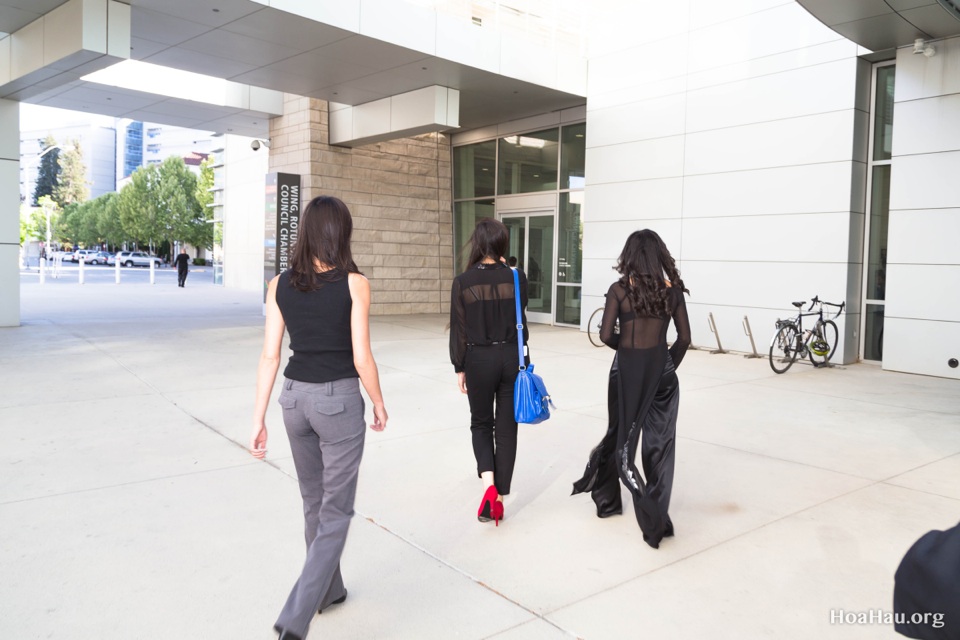

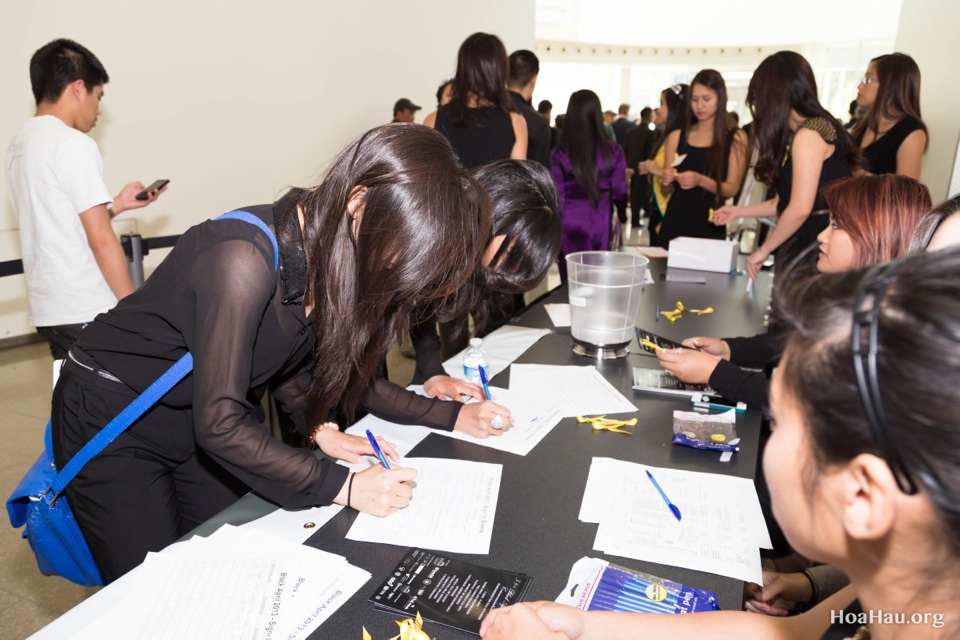 Registration
Registration





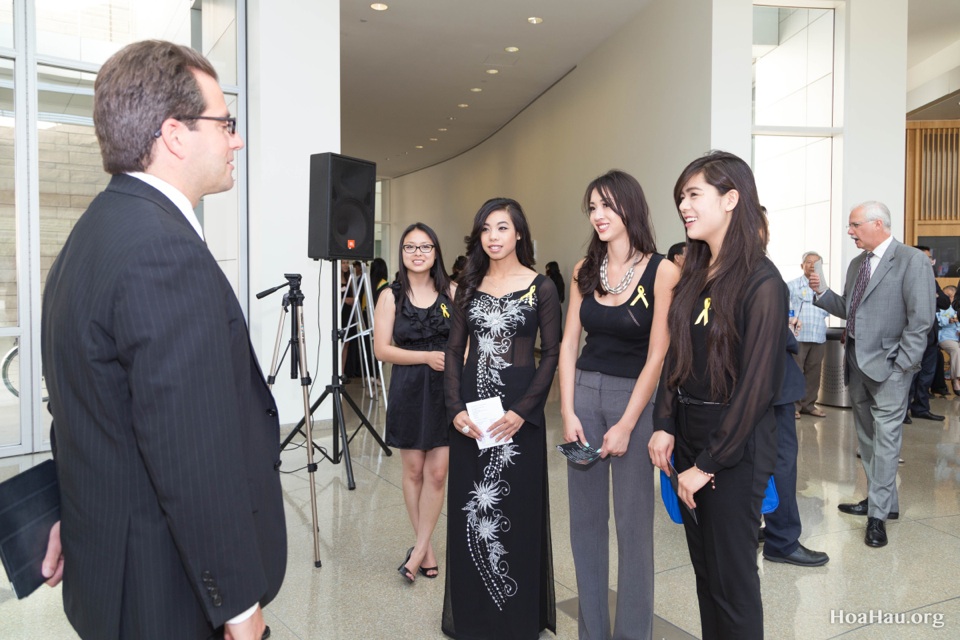

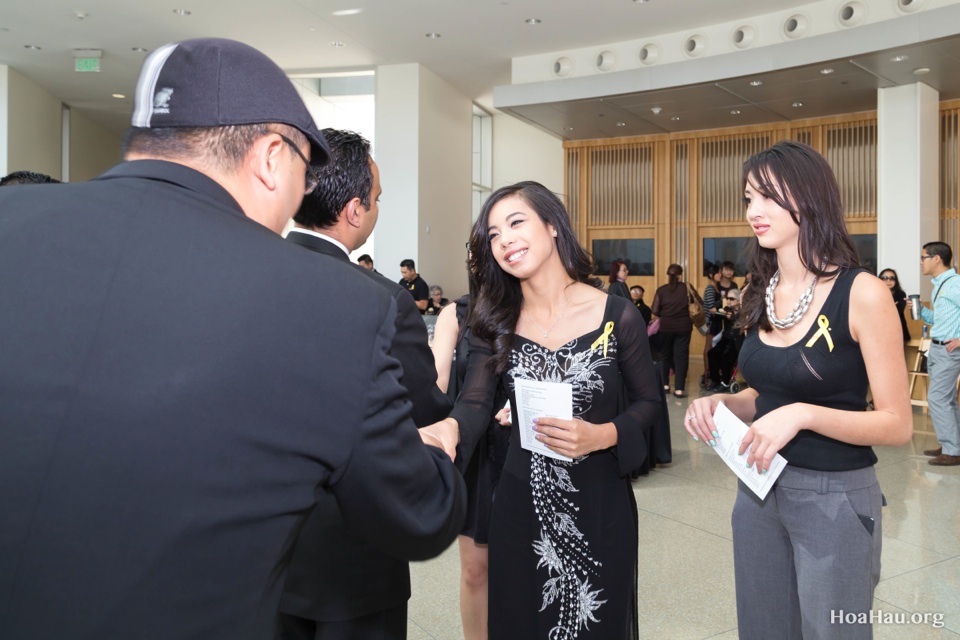

 Miss Phung, our young lawyer, is a VAR member. She invited us to this event, which we were truly thankful for the opportunity to attend and support.
Miss Phung, our young lawyer, is a VAR member. She invited us to this event, which we were truly thankful for the opportunity to attend and support.

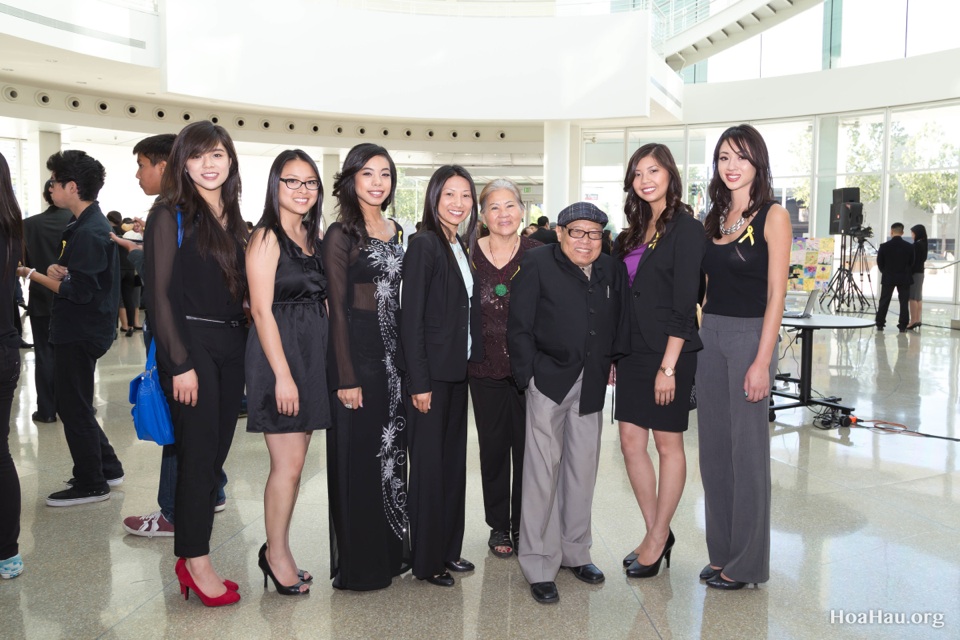

 With City Council Member, Madison Nguyen.
With City Council Member, Madison Nguyen.

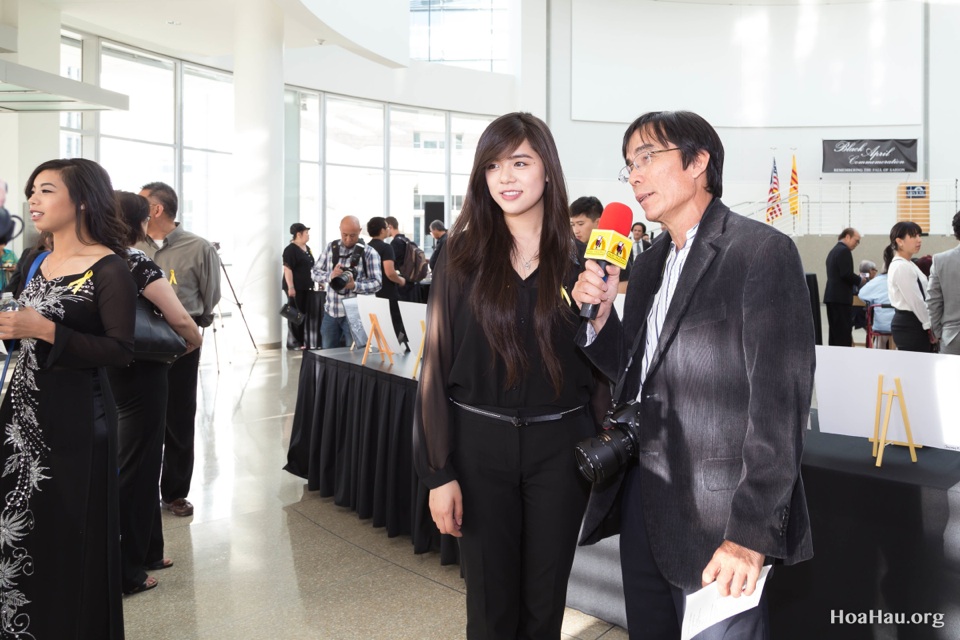 Que Huong Radio interviewed Miss Tran Le Nguyen Minh (Hoa-Hau Ao-Dai Bac Cali | Miss Vietnam of Northern California 2013)
Que Huong Radio interviewed Miss Tran Le Nguyen Minh (Hoa-Hau Ao-Dai Bac Cali | Miss Vietnam of Northern California 2013)

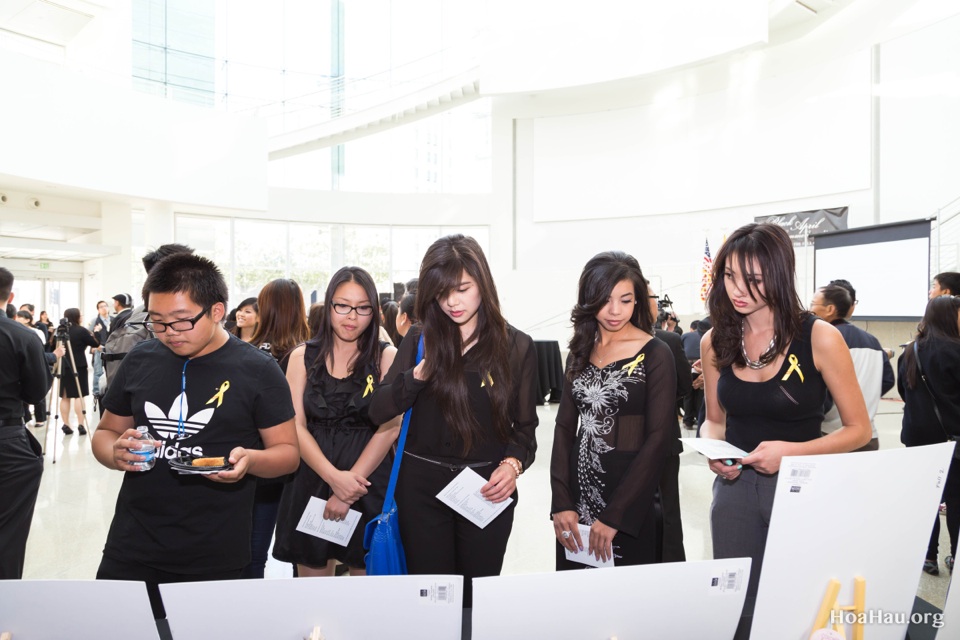 The photo postcards were laid around the room. It told a story of the events that happen during the fall of Saigon. You can read those stories below.
The photo postcards were laid around the room. It told a story of the events that happen during the fall of Saigon. You can read those stories below.

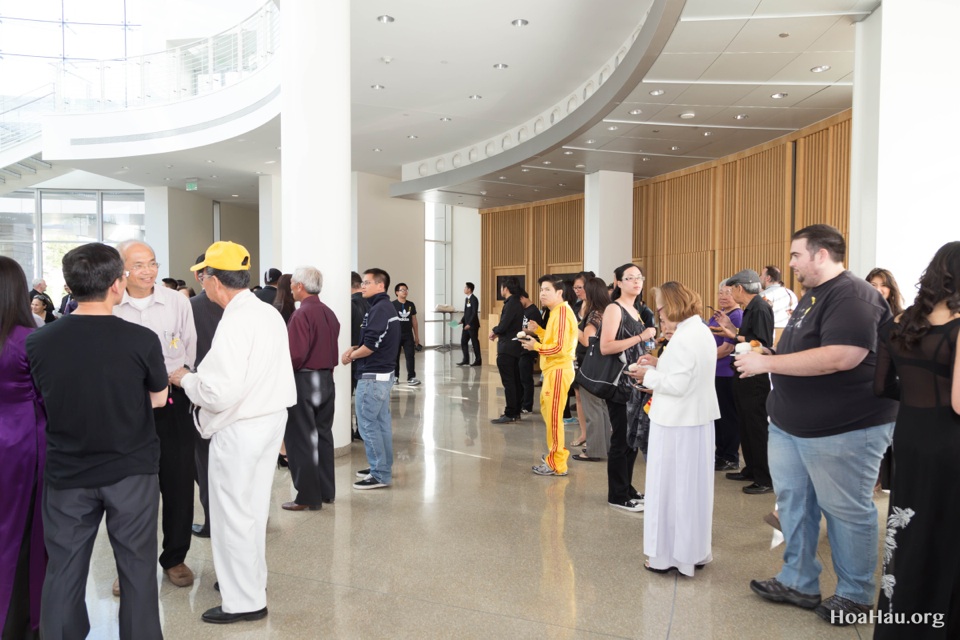 A very patriotic man wearing the Vietnamese flag
A very patriotic man wearing the Vietnamese flag

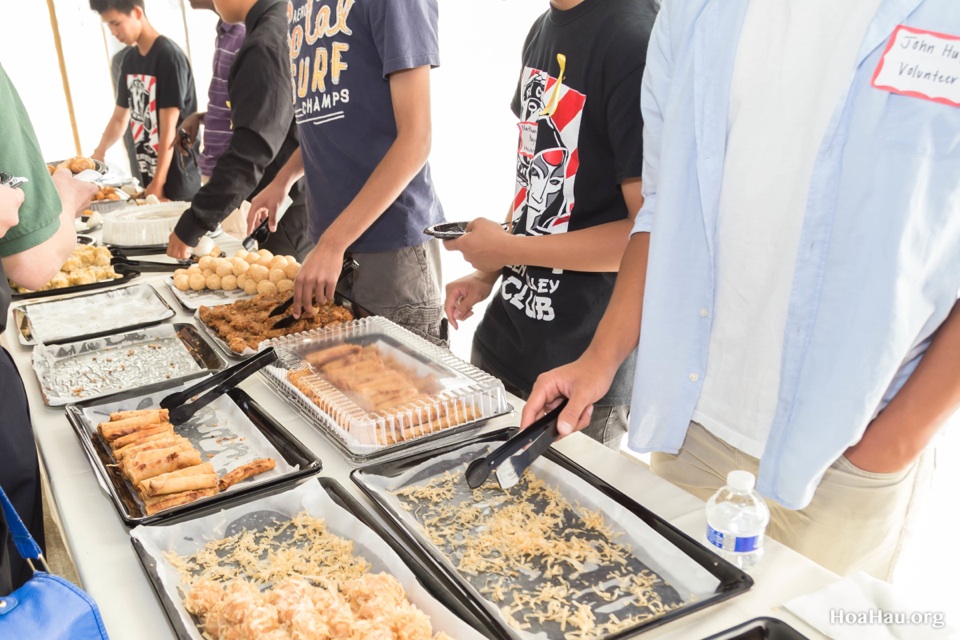 Snacks and refreshments were provided.
Snacks and refreshments were provided.

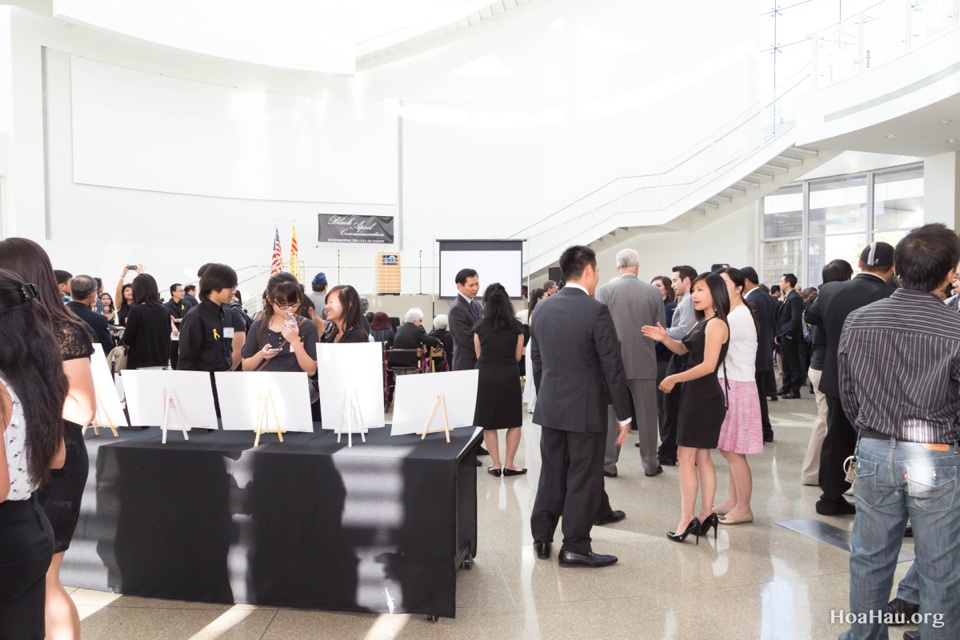

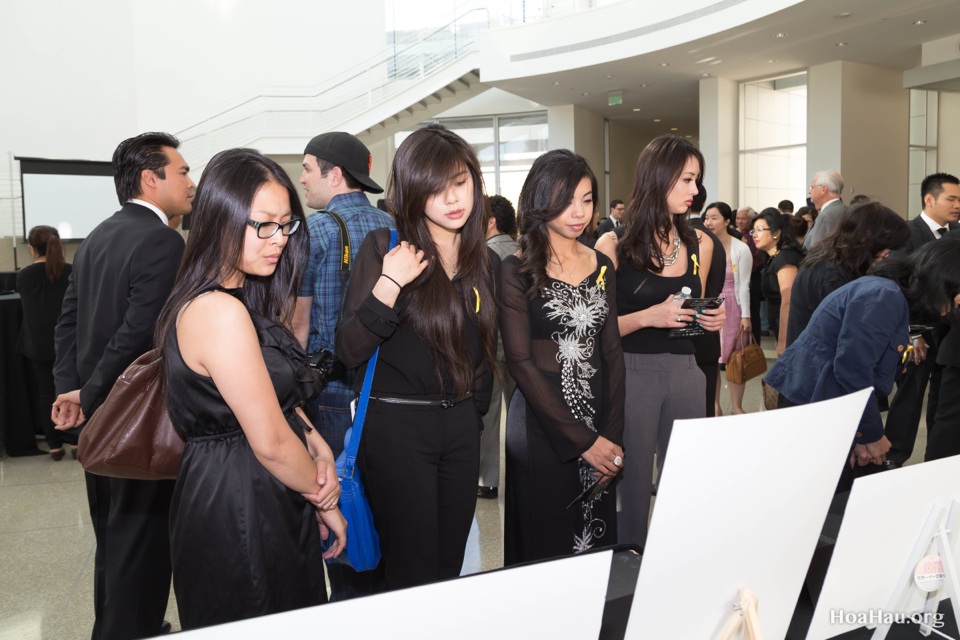



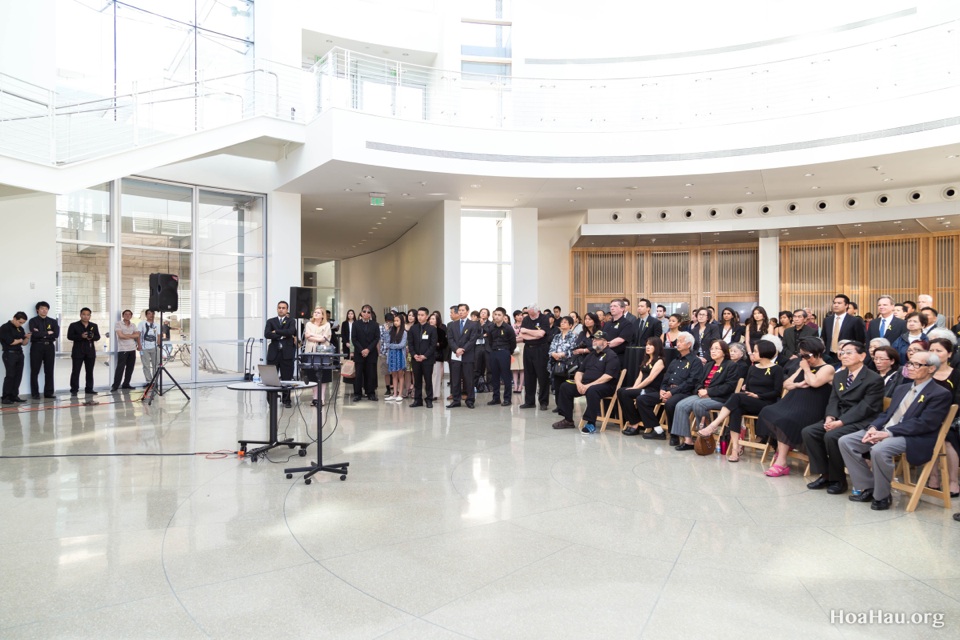 The event commenced at 6:30pm with a moment of silence.
The event commenced at 6:30pm with a moment of silence.



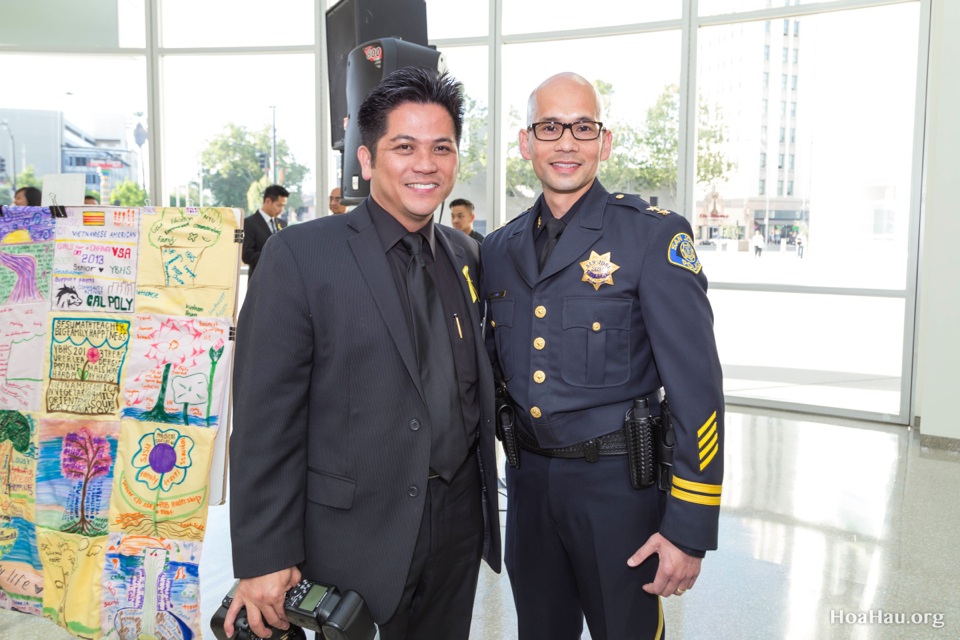 Nick Pham with Deputy Chief of San Jose Police Department, Phan S. Ngo.
Nick Pham with Deputy Chief of San Jose Police Department, Phan S. Ngo.



 VFTV was on the scene to cover this event.
VFTV was on the scene to cover this event.

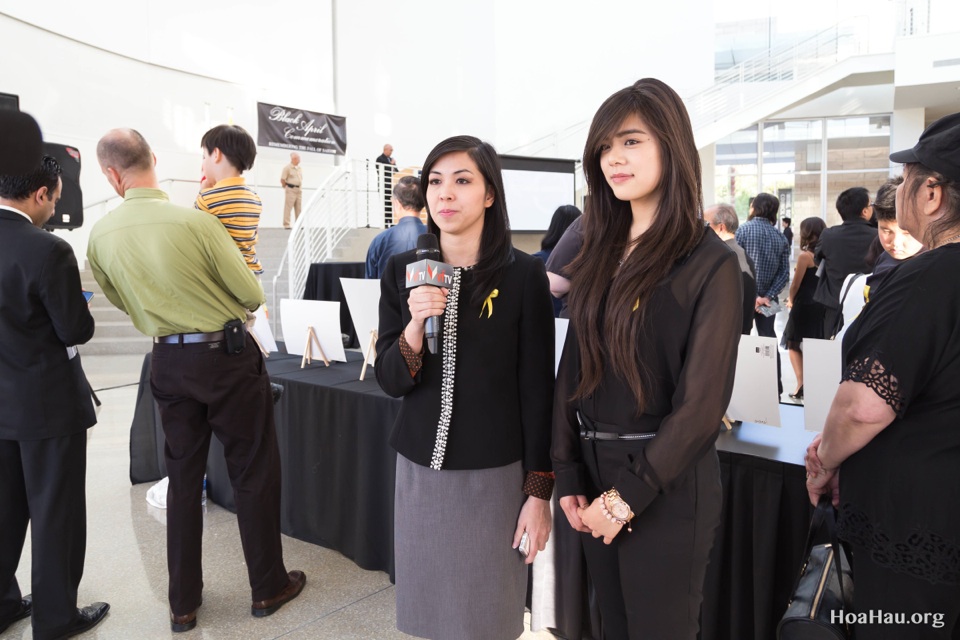 VFTV interviewed Miss Tran Le Nguyen Minh (Hoa-Hau Ao-Dai Bac Cali | Miss Vietnam of Northern California 2013)
VFTV interviewed Miss Tran Le Nguyen Minh (Hoa-Hau Ao-Dai Bac Cali | Miss Vietnam of Northern California 2013)





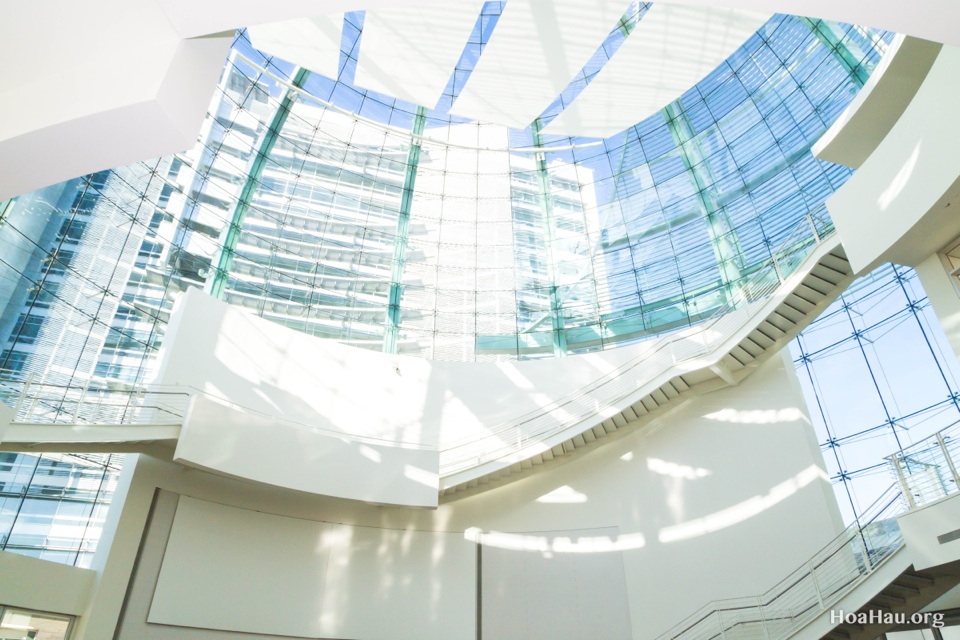 Looking up inside the Rotunda
Looking up inside the Rotunda

 April 30th, 1975 is mourned as “Black April.” On this day, the Vietnam War officially ended. As American forces evacuated the last of their forces, diplomatic staff, and Vietnamese civilians, General Minh Van Duong surrended to the North on behalf of the South Vietnamese government (known as the Republic of Vietnam). Just two day prior, Duong had just become the acting Prime Minister.
April 30th, 1975 is mourned as “Black April.” On this day, the Vietnam War officially ended. As American forces evacuated the last of their forces, diplomatic staff, and Vietnamese civilians, General Minh Van Duong surrended to the North on behalf of the South Vietnamese government (known as the Republic of Vietnam). Just two day prior, Duong had just become the acting Prime Minister.

 The original evacuation plans for the American military forces relied on fixed wing aircrafts but those plans became impossible when runways came under fire and were covered with debris. Similar complications led to American diplomatic staff to scrap their plans to get an airfield. America had to create an new evacuation plan and thus created “Operation Frequent Wind.” Under this plan, helicopters became the primary form of transport due to their ability to do vertical take-offs. Helicopters successfully flew directly into the American embassy and airbases to safely remove the people inside.
The original evacuation plans for the American military forces relied on fixed wing aircrafts but those plans became impossible when runways came under fire and were covered with debris. Similar complications led to American diplomatic staff to scrap their plans to get an airfield. America had to create an new evacuation plan and thus created “Operation Frequent Wind.” Under this plan, helicopters became the primary form of transport due to their ability to do vertical take-offs. Helicopters successfully flew directly into the American embassy and airbases to safely remove the people inside.

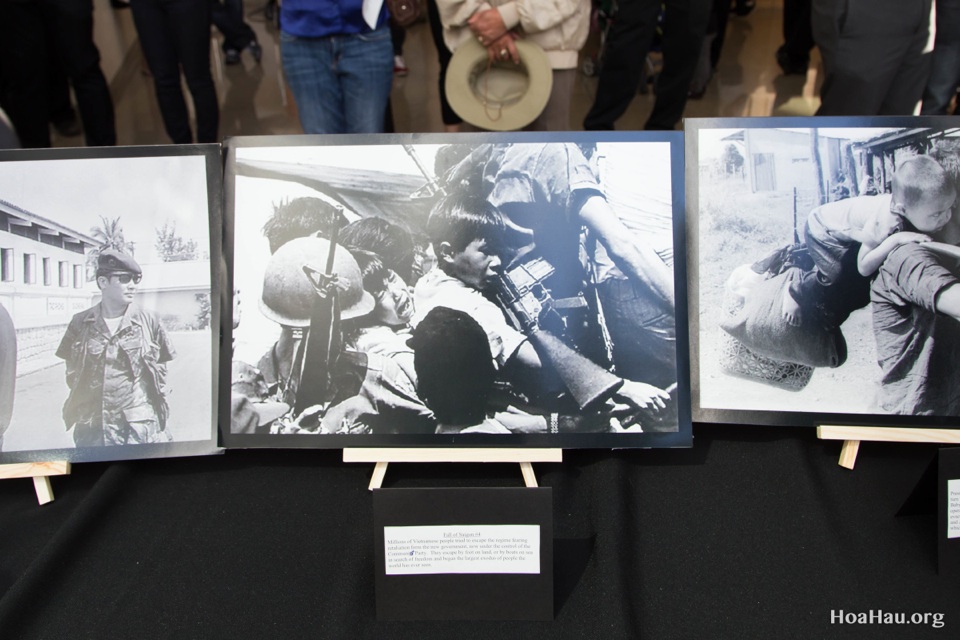 Millions of Vietnamese people tried to escape the regime fearing retaliation from the new government which was by then was under the control of the Communist Party. They escaped by any means possible to them which created one of the biggest exodus of people in the history of the world.
Millions of Vietnamese people tried to escape the regime fearing retaliation from the new government which was by then was under the control of the Communist Party. They escaped by any means possible to them which created one of the biggest exodus of people in the history of the world.

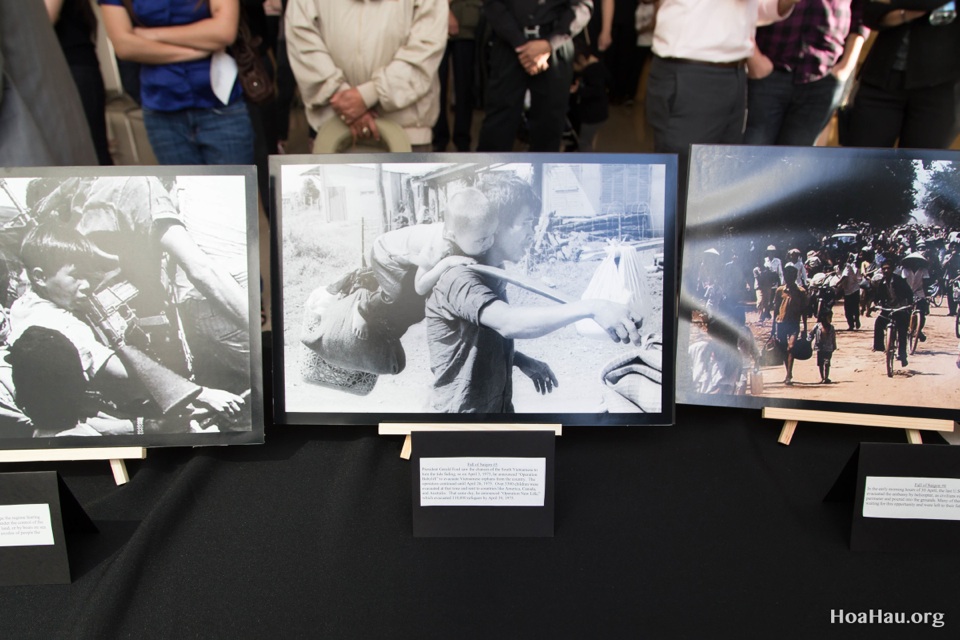 President Gerald Ford saw the chances of the South Vietnamese to turn the tide fading, so on April 3, 1975, he announced “Operation Baby Lift” to evacuate Vietnamese orphans from the country. The operation continued until April 26, 1975. Over 3,300 children were relocated and sent to countries such as America, Canada, and Australia. That same day, Ford announced “Operation New Life,” which evacuated 110,000 refugees by April 30, 1975.
President Gerald Ford saw the chances of the South Vietnamese to turn the tide fading, so on April 3, 1975, he announced “Operation Baby Lift” to evacuate Vietnamese orphans from the country. The operation continued until April 26, 1975. Over 3,300 children were relocated and sent to countries such as America, Canada, and Australia. That same day, Ford announced “Operation New Life,” which evacuated 110,000 refugees by April 30, 1975.

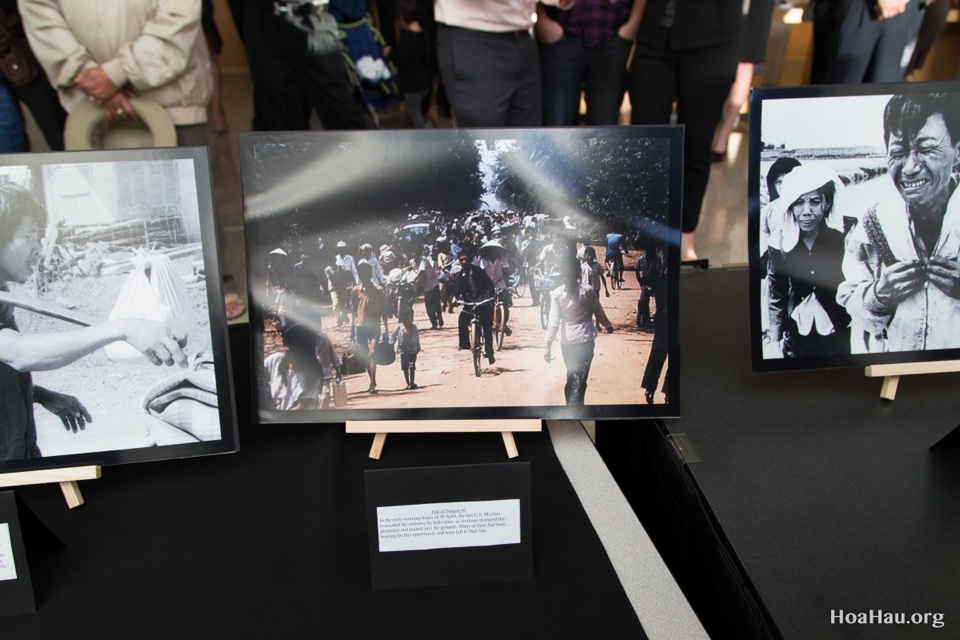 In the early morning hours of April 30th, 1975 the last of the US Marines left the embassy by helicopter. Civilians swamped the perimeter and poured into the grounds. Many of them had been waiting for this opportunity but were left to their fate.
In the early morning hours of April 30th, 1975 the last of the US Marines left the embassy by helicopter. Civilians swamped the perimeter and poured into the grounds. Many of them had been waiting for this opportunity but were left to their fate.

 As the PAVN (Communist army) advanced, many Vietnamese feared that the North would engage in bloody reprisals against any that they viewed as counterrevolutionary, including Southern Vietnamese military officers, Catholics and business people. While Americans were guaranteed a way to leave Vietnam, the vast majority of the Southern Vietnamese had to make deals to get Visas and passports that would let them leave.
As the PAVN (Communist army) advanced, many Vietnamese feared that the North would engage in bloody reprisals against any that they viewed as counterrevolutionary, including Southern Vietnamese military officers, Catholics and business people. While Americans were guaranteed a way to leave Vietnam, the vast majority of the Southern Vietnamese had to make deals to get Visas and passports that would let them leave.

 At 3:45am on April 30, 1975, the evacuation of refugees was halted, and the last remaining American staff, including Ambassador Graham Martin, were ordered to leave. He did everything he believed he could to evacuate more refugees, but reluctantly prepared to leave when he received the order. The Marines guarding the American Embassy had reserve orders to forcibly remove Ambassador Martin if he refused to leave. The last aircraft to leave the Embassy took off at 7:53am.
At 3:45am on April 30, 1975, the evacuation of refugees was halted, and the last remaining American staff, including Ambassador Graham Martin, were ordered to leave. He did everything he believed he could to evacuate more refugees, but reluctantly prepared to leave when he received the order. The Marines guarding the American Embassy had reserve orders to forcibly remove Ambassador Martin if he refused to leave. The last aircraft to leave the Embassy took off at 7:53am.

 At 10:24am on April 30, 1975, General Minh Van Duong announced the unconditional surrender of the Republic of Vietnam. By that day, over 58,000 U.S. servicemen lost their lives and at least 800,000 Vietnamese both both sides had died too. More thousands died in the aftermath of the war.
At 10:24am on April 30, 1975, General Minh Van Duong announced the unconditional surrender of the Republic of Vietnam. By that day, over 58,000 U.S. servicemen lost their lives and at least 800,000 Vietnamese both both sides had died too. More thousands died in the aftermath of the war.

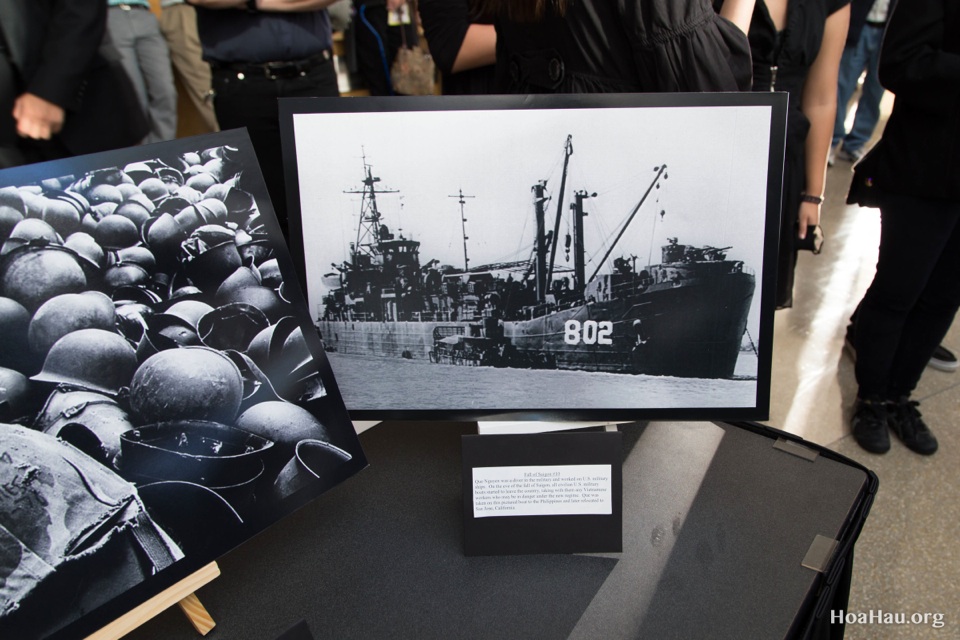 Que Nguyen was a diver in the military and worked on U.S. military ships. In the eve of the fall of Saigon, all civilian U.S. military boats started to leave the country, taking with them any Vietnamese workers who may be in danger under the new regime. Que was taken on this boat to the Philippines and later relocated to San Jose, California.
Que Nguyen was a diver in the military and worked on U.S. military ships. In the eve of the fall of Saigon, all civilian U.S. military boats started to leave the country, taking with them any Vietnamese workers who may be in danger under the new regime. Que was taken on this boat to the Philippines and later relocated to San Jose, California.

 On April 30, 1975, “The Fall of Saigon” ended the Vietnam War and prompted the first of two waves of emigration from Vietnam to the United States. They were airlifted or fled Vietnam on U.S. military cargo ships and transferred to the U.S. government bases in Guam, Thailand, Wake Island, Hawaii and the Philippines, as part of “Operation New Life”.
On April 30, 1975, “The Fall of Saigon” ended the Vietnam War and prompted the first of two waves of emigration from Vietnam to the United States. They were airlifted or fled Vietnam on U.S. military cargo ships and transferred to the U.S. government bases in Guam, Thailand, Wake Island, Hawaii and the Philippines, as part of “Operation New Life”.

 120,000 Vietnamese citizens departed from their native country during the Spring of 1975. Those who had worked closely with the Americans feared reprisal by the Communist Party and sought ways out of the country.
120,000 Vietnamese citizens departed from their native country during the Spring of 1975. Those who had worked closely with the Americans feared reprisal by the Communist Party and sought ways out of the country.
At the age of 3, Kim Delevett left Vietnam with her brother and three cousins 4 days before the fall of Saigon. Her departure was arranged by an American named Jim Smith, a friend of the family who arranged for the seats on the last few flights out of Vietnam. She was separated from her mother, who had gone back to say bye to her brother and was unable to get to the plane on time. Kim and her cousins were placed in foster care after arriving in the US. Kim later learned that her birth mother had died at a Philippines refugee camp, the night before she was to board her flight to the United States.

 During this time approximately two million Vietnamese fled Vietnam in small, overcrowded boats. This group of refugees would come to be known as “boat people”. Some countries in the region, turned the boat people away even if they did manage to make it to land. Boats carrying the refugees were deliberately sunk offshore to stop the authorities from towing them back out to sea. Refugees swamped the neighboring Southeast Asian Countries such as Thailand, Malaysia, Indonesia, the Philippines and Hong Kong. Those countries were known as the “first asylum”. The influx of refugees came a rate which ranged from 2,000 to as many as 50,000 refugees per month.
During this time approximately two million Vietnamese fled Vietnam in small, overcrowded boats. This group of refugees would come to be known as “boat people”. Some countries in the region, turned the boat people away even if they did manage to make it to land. Boats carrying the refugees were deliberately sunk offshore to stop the authorities from towing them back out to sea. Refugees swamped the neighboring Southeast Asian Countries such as Thailand, Malaysia, Indonesia, the Philippines and Hong Kong. Those countries were known as the “first asylum”. The influx of refugees came a rate which ranged from 2,000 to as many as 50,000 refugees per month.



 Many took the drastic decision to leave the country – an illegal act under the new communist government. Many fled on fishing boats that were not built for open waters. They were chronically overcrowded with little supplies, thus making any journey int the open seas potentially highly dangerous. It’s estimated that 200,000 to 500,000 people never made it to shore. They died from starvation, drowning, dehydration and disease. More died from being attacked by pirates, murdered, maimed, or sold into prostitution and slavery.
Many took the drastic decision to leave the country – an illegal act under the new communist government. Many fled on fishing boats that were not built for open waters. They were chronically overcrowded with little supplies, thus making any journey int the open seas potentially highly dangerous. It’s estimated that 200,000 to 500,000 people never made it to shore. They died from starvation, drowning, dehydration and disease. More died from being attacked by pirates, murdered, maimed, or sold into prostitution and slavery.

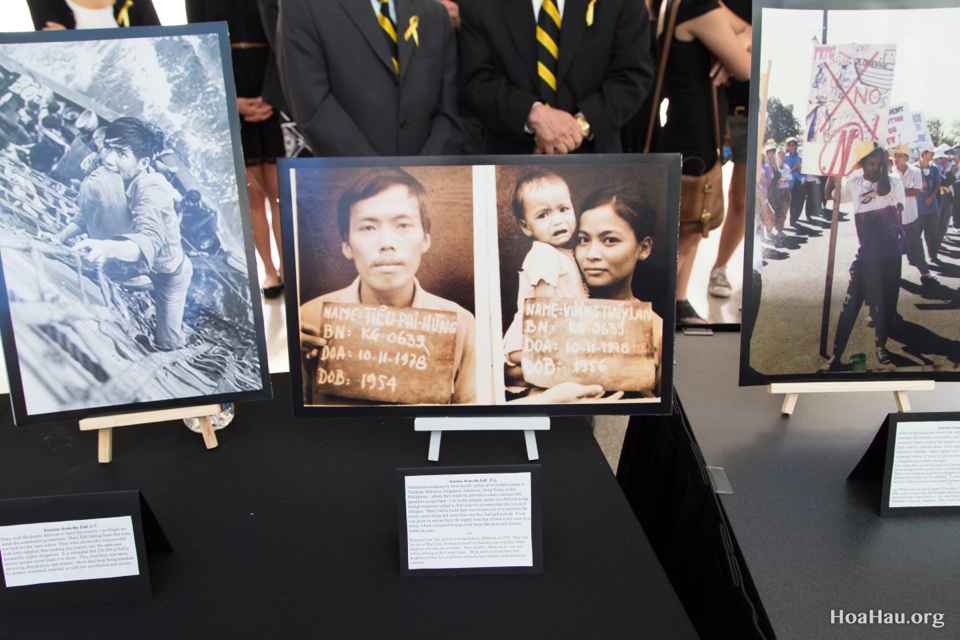 Vietnamese escaping by boast usually ended up in asylum camps in Thailand, Malaysia, Singapore, Indonesia, Hong Kong, or the Philippines – where they might be allowed to enter countries that agreed to accept them. Life in the refugee camps was difficult as the foreign countries rushed to find ways to accommodate the waves of refugees. Many had to build their own houses out of wood from the forest, some strings and plastic tarp they had gathered. Food was given in rations from the supply boast that arrived every once in a while, which contained foreign canned food items like peas and chicken.
Vietnamese escaping by boast usually ended up in asylum camps in Thailand, Malaysia, Singapore, Indonesia, Hong Kong, or the Philippines – where they might be allowed to enter countries that agreed to accept them. Life in the refugee camps was difficult as the foreign countries rushed to find ways to accommodate the waves of refugees. Many had to build their own houses out of wood from the forest, some strings and plastic tarp they had gathered. Food was given in rations from the supply boast that arrived every once in a while, which contained foreign canned food items like peas and chicken.
Hung and Lan Tieu arrived in Pulau Bidong, Malaysia in 1979. They fled the city of Rach Gia, Vietnam in search of freedom, carrying their eldest daughter who was just an infant. They stayed in Malaysia for one year before arriving in the United States. Hung and Lan raised their four daughters in San Jose, California. Hung later opened an manufacturing company.

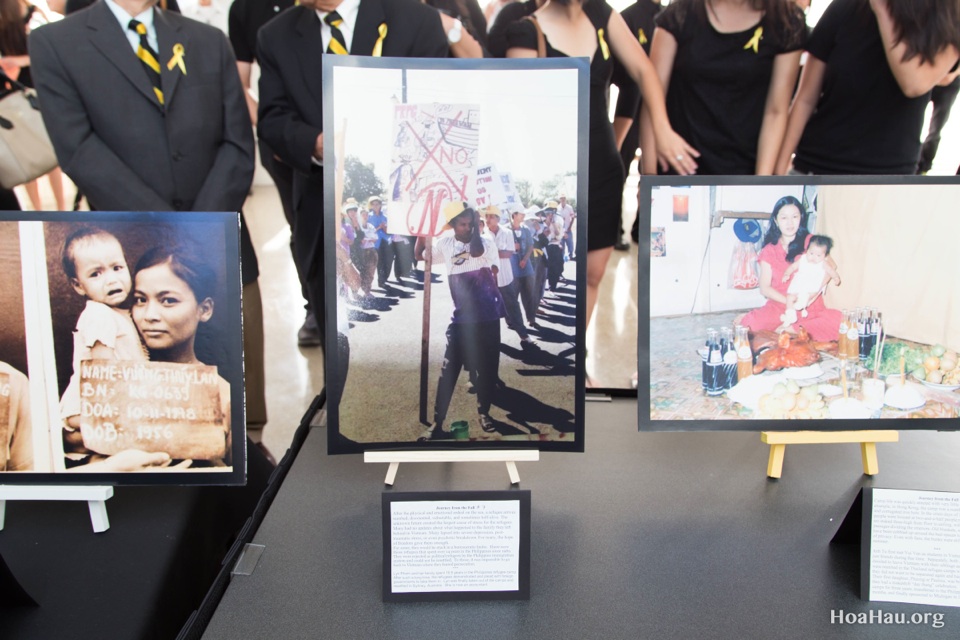 After the physical and emotional ordeal on the sea, a refugee arrives numbed, disoriented, vulnerable, and sometimes half-alive. The unknown future created the largest cause of stress for refugees. Many had no updates about what happened to the family they left behind in Vietnam. Many lapsed into severe depression, post traumatic stress, or even psychotic breakdown. For many, the hope of freedom gave them strength. For some, they would be struck in bureaucratic limbo. There were those refugees that spent over 14 years in the Philippines since 1989. They were rejected as political refugees by the Philippines immigration system and could not be resettled. To those, it was impossible to go back to Vietnam where they feared persecution.
After the physical and emotional ordeal on the sea, a refugee arrives numbed, disoriented, vulnerable, and sometimes half-alive. The unknown future created the largest cause of stress for refugees. Many had no updates about what happened to the family they left behind in Vietnam. Many lapsed into severe depression, post traumatic stress, or even psychotic breakdown. For many, the hope of freedom gave them strength. For some, they would be struck in bureaucratic limbo. There were those refugees that spent over 14 years in the Philippines since 1989. They were rejected as political refugees by the Philippines immigration system and could not be resettled. To those, it was impossible to go back to Vietnam where they feared persecution.
Lyn Pham and her family spent almost 11 years in the Philippines refugee camp. After such a long time, the refugees demonstrated and plead with foreign governments to take them in. Lyn was finally taken out of the camps and resettled in Sydney, Australia. She’s now an accountant.

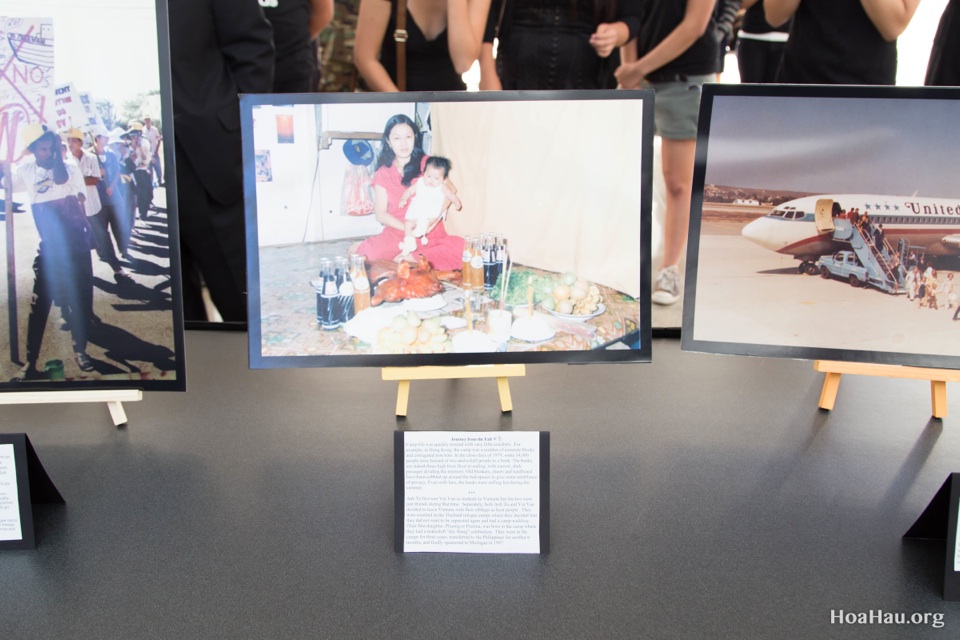 Camp life was quickly erected with very little comforts. For example, in Hong Kong, the camp was a number of concrete blocks and corrugated iron huts. In the crisis days of 1979 some 14,000 people were housed at two-and-a-half people to a bunk. the bunks are staked three high from floor to ceiling, with narrow, dark passages dividing the interiors. Old blankets, sheets and hardboard have been cobbled up around the bed-spaces to give some semblance of privacy. Even with fans, the bunks were stifling hot during the summer.
Camp life was quickly erected with very little comforts. For example, in Hong Kong, the camp was a number of concrete blocks and corrugated iron huts. In the crisis days of 1979 some 14,000 people were housed at two-and-a-half people to a bunk. the bunks are staked three high from floor to ceiling, with narrow, dark passages dividing the interiors. Old blankets, sheets and hardboard have been cobbled up around the bed-spaces to give some semblance of privacy. Even with fans, the bunks were stifling hot during the summer.
Anh Tu first met Vui Van as students in Vietnam but the two were just friends during the time. Separately, both Anh Tu and Vui Van decided to leave Vietnam with their siblings as boat people. They were reunited in the Thailand refugee camps where they decided that they did not want to be separated again and had a camp wedding. Their first daughter, Phuong (Pauline) was born in the camp where they had a makeshift “day thang” celebration. They were in the camps for three years, transferred to the Philippines for another 6 months and finally sponsored to Michigan in 1987.

 In 1975, President Geral Ford set up an interagency task forced that resettled 130,000 refugees from South Vietnam after the fall of Saigon. In total, the United States accepted 531,310 refugees and asylum seekers from Vietnam between 1981 and 2000.
In 1975, President Geral Ford set up an interagency task forced that resettled 130,000 refugees from South Vietnam after the fall of Saigon. In total, the United States accepted 531,310 refugees and asylum seekers from Vietnam between 1981 and 2000.
The Vo family deplaning from their flight from Vietnam to the United States. As part of the Southern Vietnamese forces working with the US Army, they were among the first to arrive in the United States. This picture was taken at the Monterey Airport in California on August 20th, 1975.

 In 1975, over 50,000 Vietnamese refugees passed through the gates of Camp Pendleton after the fall of Saigon. Many of these refugees ended up settling in the United States and Europe. The United States accepted 823,000 refugees; Britain accepted 19,000; France accepted 96,000; Australia and Canada accepted 137,000 each.
In 1975, over 50,000 Vietnamese refugees passed through the gates of Camp Pendleton after the fall of Saigon. Many of these refugees ended up settling in the United States and Europe. The United States accepted 823,000 refugees; Britain accepted 19,000; France accepted 96,000; Australia and Canada accepted 137,000 each.

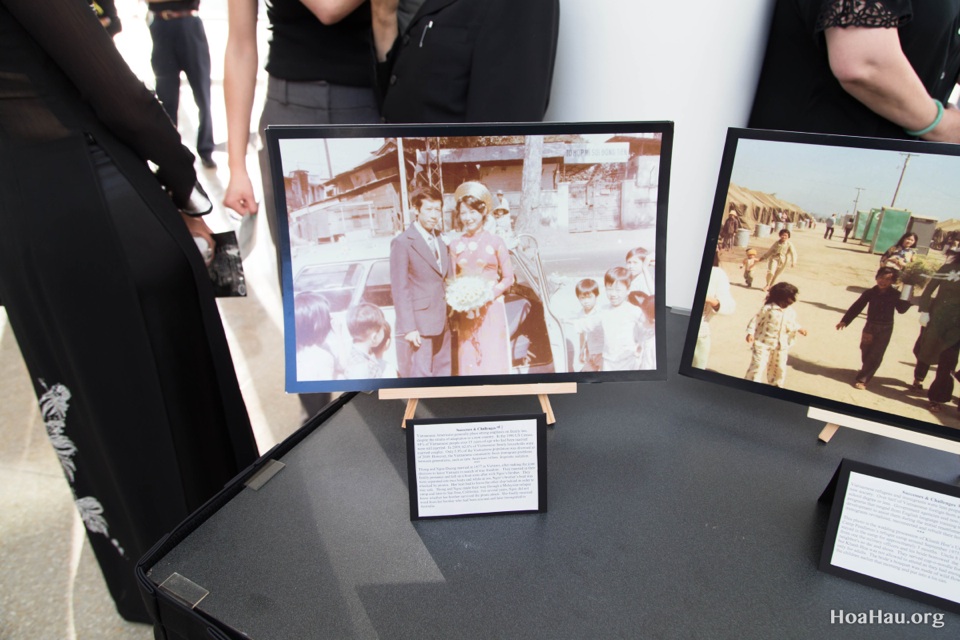 Vietnamese Americans generally place strong emphasis on family ties, despite the strains of adaptation to a new country. In the 1990 US Census 84% of Vietnamese people over 15 years of age who had been married were still married. In 2009, 62.6% of Vietnamese family households were married couples. Only 5.9% of the Vietnamese population was divorced as of 2009. The Vietnamese community faces immigration problems between generations, such as new American values and linguistic isolation.
Vietnamese Americans generally place strong emphasis on family ties, despite the strains of adaptation to a new country. In the 1990 US Census 84% of Vietnamese people over 15 years of age who had been married were still married. In 2009, 62.6% of Vietnamese family households were married couples. Only 5.9% of the Vietnamese population was divorced as of 2009. The Vietnamese community faces immigration problems between generations, such as new American values and linguistic isolation.
Thong and Ngoc Duong married in 1977 in Vietnam, after making the joint decision to leave Vietnam in search of freedom. They married in their family presence and left on a boat soon after with Ngoc’s brother. They were separated into two boats and while at sea. Ngoc’s brother’s boat was attacked by pirates. Her boat had to leave the other boat behind in order to remain safe. Thong and Ngoc made their way through a Malaysian refugee camp and later to San Jose, California. For several years, Ngoc did not know whether her borther survived the pirate attack. She finally received word from her brother who had been rescued and later immigrated to Australia.

 Vietnamese refugees and immigrants were less prepared for adaptation to a new society. Over half of Vietnamese foreign-born adults had a high school degree or less. Government agencies and non-profit groups offered programs that ranged from English language training to employment development to assist them during the initial resettlement. With time, immigrants revitalized, reconnected and rebuilt their home.
Vietnamese refugees and immigrants were less prepared for adaptation to a new society. Over half of Vietnamese foreign-born adults had a high school degree or less. Government agencies and non-profit groups offered programs that ranged from English language training to employment development to assist them during the initial resettlement. With time, immigrants revitalized, reconnected and rebuilt their home.
This photo is the wedding procession of Khanh Hoa’s Uncle #8 at the Camp Pendleton’s refugee camp around September 1975. Their family stayed in the camp for approximately 3 months. Uncle 8 borrowed the suit from one of the military officers and his bride borrowed the neighbors’s ao-dai and shoes. They served cup-o-noodle for the reception, but Khanh Hoa was not allowed to attend as they had enough instant noodle for only adults. Teh bride’s bouquet was made of wild flowers, picked by the children earlier that morning and put into a tin can.

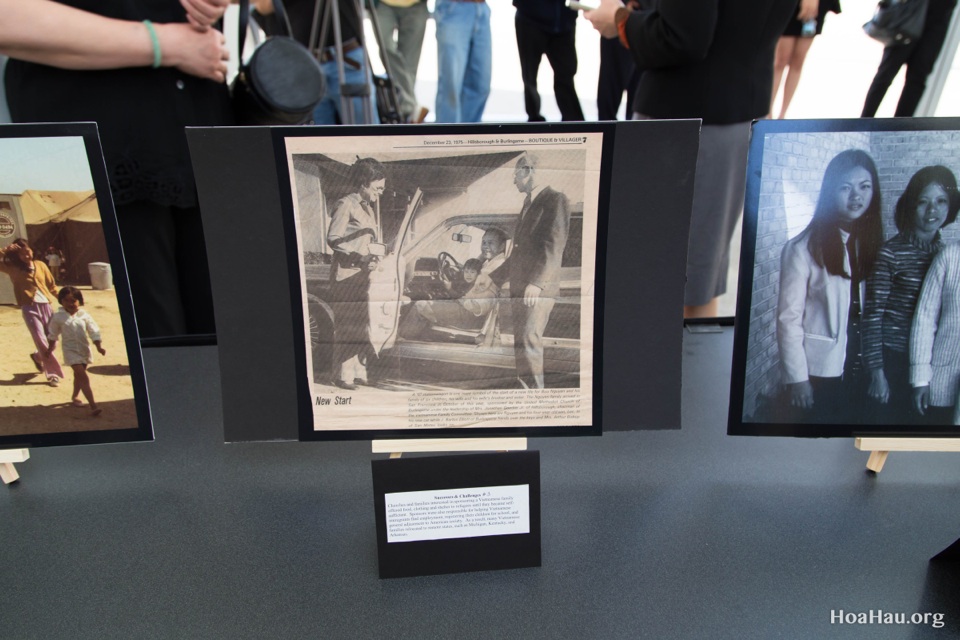 Churches and families interested in sponsoring a Vietnamese family offered food, clothing and shelter to refugees until they became self sufficient themselves. Sponsors were also responsible for helping Vietnamese immigrants find employment, registering their children for school, and general adjustments to American society. As a result, many Vietnamese families relocated to remote states, such as Michigan, Kentucky and Arkansas.
Churches and families interested in sponsoring a Vietnamese family offered food, clothing and shelter to refugees until they became self sufficient themselves. Sponsors were also responsible for helping Vietnamese immigrants find employment, registering their children for school, and general adjustments to American society. As a result, many Vietnamese families relocated to remote states, such as Michigan, Kentucky and Arkansas.

 Vietnamese immigrants tended to graviate toward urban areas and warmer areas, with new enclaves increasingly changing the face of cities. “Little Saigon” provide a zone of comfort for Vietnamese Americans. Orange County, California boasts the largest population of Vietnamese Americans, followed closely by Santa Clara County; however, San Jose, California has the largest percentage of Vietnamese population by city and is now home to he most recent Little Saigon town.
Vietnamese immigrants tended to graviate toward urban areas and warmer areas, with new enclaves increasingly changing the face of cities. “Little Saigon” provide a zone of comfort for Vietnamese Americans. Orange County, California boasts the largest population of Vietnamese Americans, followed closely by Santa Clara County; however, San Jose, California has the largest percentage of Vietnamese population by city and is now home to he most recent Little Saigon town.
Thanh Cao and Kim Nguyen had already retired in Vietnam but after the fall of Saigon, their family was forced by the Communist government to relocate to the uninhabitable “New Economic Zone.” Although their oldest son, Tam, was still in a reeducation camp, the family had no choice and made the decision to flee Vietnam with their remaining two daughters, Thinh, Vinh and Linh, the oldest grandson. They were later rescued by a U.S. boat and taken to the Singapore refugee camp. The Cao family was sponsored by a United Methodist church to Grand Rapids, Michigan. They later made their way to San Jose, California where they were reunited with their son and 17 grandchildren.

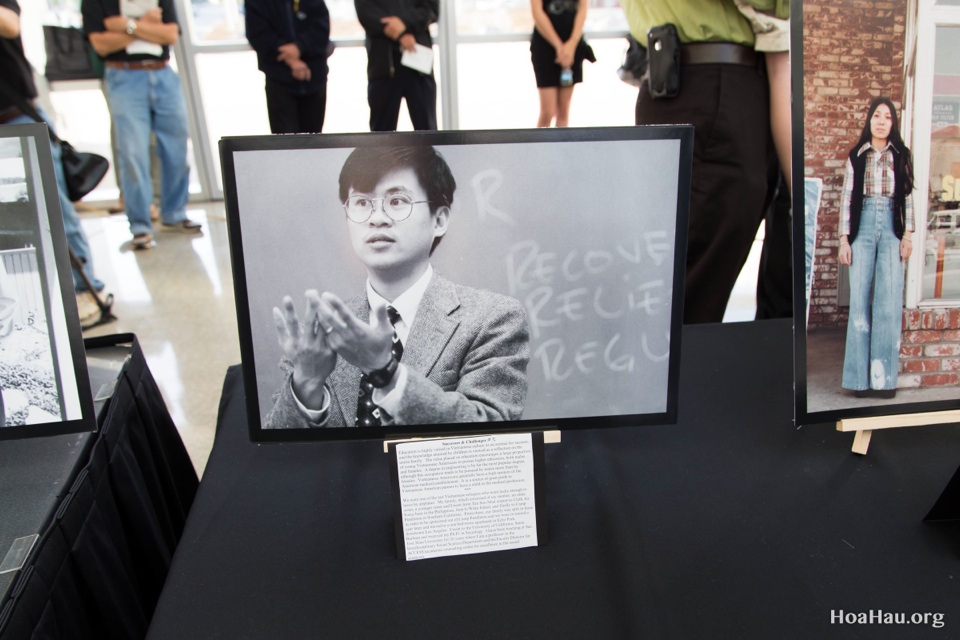 Education is highly valued in the Vietnamese culture as an avenue for success, and the knowledge attained by children is viewed as a reflection on the entire family. The value placed on education encourages a large proportion of young Vietnamese Americans to pursue higher education, both males and females. Vietnamese Americans generally have a high opinion of the American medical establishment. It’s source of great pride to Vietnamese American parents to have a child in the medical profession.
Education is highly valued in the Vietnamese culture as an avenue for success, and the knowledge attained by children is viewed as a reflection on the entire family. The value placed on education encourages a large proportion of young Vietnamese Americans to pursue higher education, both males and females. Vietnamese Americans generally have a high opinion of the American medical establishment. It’s source of great pride to Vietnamese American parents to have a child in the medical profession.
We were one of the last Vietnamese refugees who were lucky enough to leave by airplanes. My family, which consisted of my mother, an older sister, a younger sister and I went from Tan Son Nhat airport to Clark Air Force base in the Philippines, when to Wake Island, and finally to Camp Pendleton in Southern California. From there, our family was split in three in order to be sponsored out of the camp. We were reunited a year later and moved to a one-bedroom apartment in Echo Park in downtown Los Angeles. I went to the University of California, Santa Barbara and received my Ph.D. in Sociology. I have been teaching at San Jose State University for 20 years where I am a professor in the Interdisciplinary Social Science Department and the Faculty Director for ACCESS (Academic counseling center for excellence in the social sciences).

 Over 1/4 of Vietnamese-born men are employed in manufacturing, installation, and repair occupations. The 2007 Survey of business owners showed that Vietnamese owned 229,149 businesses. Of all the businesses 59% were in repair, maintenance, personal, and laundry services. This includes hair and nail salons. 7.8% were in retail trade, 5% were in professional, scientific, and technical services, 4.8% were in health care and social asisstance, 4.6 % were in real estate and rental and leasing, 3.8% were in administrative and support and waste management and remediation services, 15% were in other industries.
Over 1/4 of Vietnamese-born men are employed in manufacturing, installation, and repair occupations. The 2007 Survey of business owners showed that Vietnamese owned 229,149 businesses. Of all the businesses 59% were in repair, maintenance, personal, and laundry services. This includes hair and nail salons. 7.8% were in retail trade, 5% were in professional, scientific, and technical services, 4.8% were in health care and social asisstance, 4.6 % were in real estate and rental and leasing, 3.8% were in administrative and support and waste management and remediation services, 15% were in other industries.
Chi Kim Dang, a former supply manager for the Defense Attache Office for the US Airforce. she is pictured here in front of the Exxon gas station located in San Jose in 1978, which she started with her husband, Van Thanh Vo.

 Small businesses such as auto repair shops, restaurants, nail salons are niches where many Vietnamese are enjoying economic success. Vietnamese businesses are growing rapidly, demonstrating Vietnamese ambition and dedication to succeeding despite limited English skills or technical training.
Small businesses such as auto repair shops, restaurants, nail salons are niches where many Vietnamese are enjoying economic success. Vietnamese businesses are growing rapidly, demonstrating Vietnamese ambition and dedication to succeeding despite limited English skills or technical training.

 Khanh Hoa was the oldest of 6 children from a wealthy family in Long An. Her father was in the military for the South Republic of Vietnam. At the Fall of Saigon her patriotic father wanted to stay and fight until the very end, but after looking at his his six children he realized that the communist government would punish his patriotism against his children and decided that they would flee. They fled that night in chaos in dark unlit tug boats as the Communist military shot at those boats that were lit. Khanh Hoa later became a teacher and now teaches Vietnamese language and ethic studies at Evergreen Community College.
Khanh Hoa was the oldest of 6 children from a wealthy family in Long An. Her father was in the military for the South Republic of Vietnam. At the Fall of Saigon her patriotic father wanted to stay and fight until the very end, but after looking at his his six children he realized that the communist government would punish his patriotism against his children and decided that they would flee. They fled that night in chaos in dark unlit tug boats as the Communist military shot at those boats that were lit. Khanh Hoa later became a teacher and now teaches Vietnamese language and ethic studies at Evergreen Community College.

 Recent studies found that Vietnamese American children ranked higher than other American children in both grades and standardized test scores. However, they still showed some deficiencies in language and reading. It has been important for families to continue to maintain their Vietnamese heritage through cultural and language programs.
Recent studies found that Vietnamese American children ranked higher than other American children in both grades and standardized test scores. However, they still showed some deficiencies in language and reading. It has been important for families to continue to maintain their Vietnamese heritage through cultural and language programs.

 Student’s artwork
Student’s artwork

